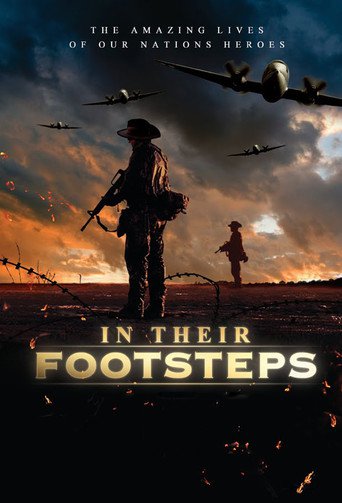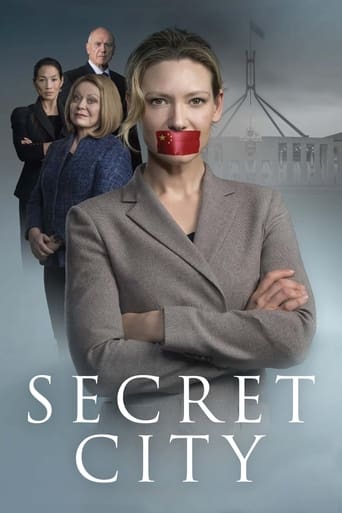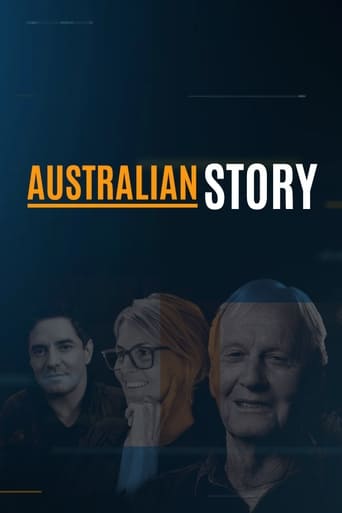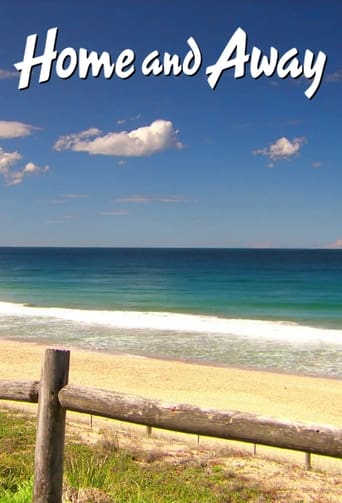In Their Footsteps Season 1
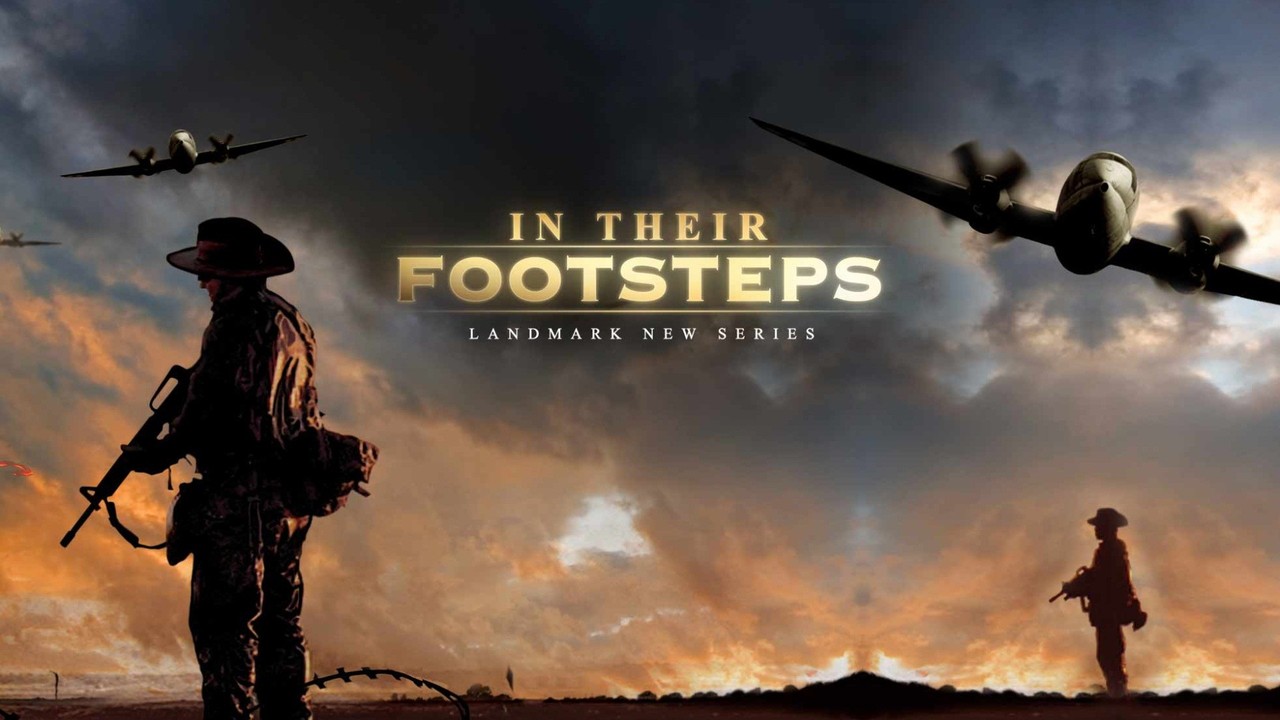
In Their Footsteps is a ten-part documentary depicting Australian families and war. The first episode aired in Australia on 8 May 2011 on the Nine Network. In each episode an Australian will retrace the steps of a close ancestor’s wartime experience.
Watch NowWith 30 Day Free Trial!
In Their Footsteps
2011
In Their Footsteps is a ten-part documentary depicting Australian families and war. The first episode aired in Australia on 8 May 2011 on the Nine Network. In each episode an Australian will retrace the steps of a close ancestor’s wartime experience.
Watch Trailer
With 30 Day Free Trial!
In Their Footsteps Season 1 Full Episode Guide
To his army mates, Stanley “Stunna” Johns was a legend. A bloke you could rely on in a stoush. Through his service in World War II, Korea and Vietnam, Stan certainly saw a lot of stoushes. In Korea, he helped keep the waves of Chinese forces at bay in the famed and crucial 1951 Battle of Kapyong. However, whatever victories were had on the battlefield mattered little for a young Steve Johns, who now lives on the NSW mid north coast. As a boy, growing up in Bendigo, VIC, he knew only a father who was ‘a monster of a tank of man’ who drank too much and brutalised his wife and kids. Stanley may have been a legend to his mates, but at home it was a battle zone. Today, Steve is 51 and wants to know just what it was that made his late dad behave so badly. He believes the answer lies among the mountains and trenches of Korea – among the reminders of a war about which Steve knows very little. He’s not alone; for most Australians, Korea is the forgotten war.
When the Japanese bombed Darwin on February 19, 1942, the damage was devastating – and the silence deafening. News of the attack was limited and most Australians were oblivious to the devastation on our own shores. Not that Les Semken needed a newsreel to know what happened; he saw it all unfold first hand. As a civilian contractor working at Darwin aerodrome when the bombs fell, Les was so incensed he enlisted into the Army the very next day. This was a major turnaround for him. Until now, Les had no interest in joining up. The war had suddenly become very personal. Nearly 70 years later, his granddaughter Kathryn is also on a very personal mission - to learn about the war that came to her grandfather and to Australia’s shores. Kathryn knows that at 90, Les won’t be around much longer to tell her the story himself – about that moment in time, which changed his life and shaped the fate of his family. This is a tender tale about a 25-yearold woman, taking time out from her busy life to learn the lessons of an elder; to understand about the historic moments that shaped her grandfather at much the same age. It is a story about the wisdom of elders and the galvanising experiences of our youth.
Serving as a runner on the Western Front during World War I required courage, commitment and, if you were to survive, a significant amount of luck. After all, 60,000 Australians were left behind on the Great War’s battlefields. George Hannaford certainly had courage – he was awarded the prestigious Military Medal for his extraordinary efforts running messages between the front line and commanders at the 1917 battle of Polygon Wood. RELATED LINKS Watch Full Episodes Private Hannaford also had enough good luck to make it through the war, returning home to marry and establish a successful dairy farm that is still in the family to this day. Kristy Cooper grew up on that settlement farm and has spent her whole life in the district of Katandra, Victoria. Now, the mother of three wants to know how her family came to be there, how the war shaped her great grandfather’s life, and in turn, how it shaped the destiny of her entire family. Kristy is motivated by her love for her grandfather, George’s son. He is growing old and she wants to be able to tell him what his father endured and achieved on the battlefields of France and Belgium. He remembers a few war stories, but it’s hard to sort fact from myth. Like any men of his generation, George never really talked to his family about what he saw, what he did and the mark it left on him. meant to serve amid the mud and mayhem of the Western Front. An extraordinary story of a true survivor
Gathered around the television one afternoon, the Healey family was watching the classic Steve Mc Queen film, The Great Escape – in much the same way millions have enjoyed it. But this afternoon, in this family, it would be different. Tony Healey was trying to make out what his grandfather, Bill was muttering under his breath. Tony finally asked what was wrong. “It wasn’t anything like that,” Bill replied. “How do you know?” It was a fair enough question and his grandfather’s response would almost knock Tony off the couch. “I was on the Escape Committee!” And so began Toni’s journey of discovery into just exactly what his grandfather did during the war. Aircrafts don’t come anymore iconic than the Lancaster Bomber, and the airmen who flew them were the celebrities of WWII. As a navigator in Bomber Command, Bill Healey and his crew were so highly skilled they were chosen for the elite Path Finder Force, guiding hundreds of Bomber Command aircraft over the night skies of Germany. It was crucial, dangerous work from which many never returned. After more than 30 successful operations, Bill’s Lancaster was shot down. The crew parachuted into the German countryside, and were soon captured and interned as prisoners of war. Bill was sent to Stalag Luft III, a camp that would go down in the history books for the daring escapes that took place there. However, these escapes were rarely successful and often ended in tragedy. Tony Healey is an engineer who lives with his wife and three kids on the New South Wales south coast. He wants to know exactly what his grandfather went through. Tony will discover a world of daring flying missions, survival in the face of hardship and loneliness, and a love story struggling to survive the tyranny of time and distance.
Legend has it a Hippisley has served in every battle since Waterloo. They certainly served in World War I, World War II and Vietnam. To be a man in Mark Hippisley’s family, the 41-year-old has long believed, you must go to war. And Mark certainly tried. An Air Force Cadet as a child, he went on to full-time RAAF service. However, a workplace injury cut short his military career and rubbed out a life-long ambition. Slowly, steadily, it widened the gap that already existed between him and his father. Terrence ‘Hippo’ Hippisley, a boisterous, larger-than-life Vietnam veteran with a healthy dose of mischief, is the opposite of his quiet and reserved son. But beneath the tough, larrikin exterior are wounds of war that have never really healed and have fractured Hippo’s family. Join Mark as he walks in his father’s footsteps; from the battlefields of a rubber plantation to the busy streets of Vung Tau. It is an extraordinary journey - from the heat of battle to a deeper understanding of the cost of war and, ultimately, of his father.
Today, some Australians take Special Forces (SAS) for granted, an indispensable arm of our Defence Forces. But it wasn’t always so. With the outbreak of World War II, as Australia confronted an expansionist Japan, there were no commandos, no SAS. So, when Billy Brandis enlisted in 1941, he had no idea, after serving with distinction as a signaller, he would be handpicked to join a covert new unit. It would be commonly known as Z Special Unit. In January 1944 Sergeant Brandis is deployed to British North Borneo as a member of Operation Python II. Poorly trained or prepared for the operation, Billy was separated from his unit and was lost in the dense and unforgiving jungle. What followed is an extraordinary story of endurance and courage and now, nearly seven decades later, Billy’s niece is following in his footsteps through the jungle, humidity and mud. For Tracy Brandis-Gray, from Beaconsfield, Tasmania, her Uncle Billy’s fate has remained a secret history – much like the covert operation that took him to Borneo. She wants to discover the truth and pay tribute to the uncle she never knew.
Albert Moore is a unique wartime legend. He saw some of the fiercest and most merciless battles of World War II, but never fired a single shot. Major Albert Moore was a Salvation Army officer who tirelessly brought coffee and comfort to men on the frontline, tended to the wounded and, in desperate times, did everything he could to make life more bearable for the diggers. It was a role he fulfilled from the searing deserts of the Middle East to the unrelenting jungles of Kokoda. Such was his commitment and courage, Albert Moore inspired extraordinary respect and affection. As well as being immortalised in the image of lighting the cigarette of a wounded digger in 1942, Albert would become part of one of the enduring images of Australians at war; the sustaining power of mateship. Albert’s service has also left a strong impression on a young descendant. His great great nephew, Nathan Folkes, has been inspired by the example of this man who, at the age of 42, left his wife and son to assist the war effort with courage and conviction. Nathan is following in his great great uncle Albert’s footsteps along Kokoda – a sweaty, gruelling trek that takes him waist-deep through the rivers and trudging up the mountainsides of Papua New Guinea. At 21, Nathan is the same age as many of the young men who served and, in many cases, never returned from that brutal, crucial campaign. All along the way, this young accountancy student from Ballarat, VIC. asks himself a burning personal question: what would I have done?
Gallipoli is Australia’s most commemorated battleground, etched deeply into the national psyche. It is also woven deeply into Josh Cavalier’s family story; both his grandfather and great grandfather fought among those unforgiving beaches and cliffs. Now, Josh, a 30-year-old IT technician from Shepparton, VIC., will fully comprehend what they endured and why it has left such an imprint on his family and his country. Josh embarks on his journey to Gallipoli with his own poignant father and son story. His dad, Brian, left home when Josh was just an infant. Distance and addiction kept Brian out of Josh’s life till he was an adult and in recent times they are finding a way back from the lost years. Josh believes to understand his father; he must first understand his dad’s father’s World War I experiences. Josh does not go far before he discovers there is much more to this journey than he ever anticipated. This is a tender story about a son’s search into his father’s past, to map out a path for their future together. Along the way, Josh’s journey offers a fresh look at Gallipoli and the way it shaped families and an entire nation.
The story of a talented and heroic fighter pilot, the thrill of flying, and a life cut tragically short by war. Tony Boyd was an RAAF fighter pilot, a dangerous and glamorous job that took him to the skies above Malta during the Mediterranean island’s crippling siege during World War II. Young, talented and courageous, Pilot Officer Boyd flew Hurricanes and Spitfires and had the looks and charisma to fill the role of this new breed of pin-up - the fighter pilot. For the first time on a major scale, fighting has taken to the air and the men flying these new machines were very much celebrated. Tony Boyd was very good at his job. He was the best of the best. But, tragically, he would never return home. He was killed in action in 1942 and all these years later; his great-niece wants to find out what really happened in the skies where he flew. Megan MacDonald shares her great uncle’s love of flying. The 39-yearold mother of three from Gayndah in central Queensland is training to be a pilot. She knows and loves the feeling of being in the air, but cannot imagine what it was like for her great uncle to fly in combat, shooting down enemy aircraft and dodging bullets in the sky. Tony died at the tragic young age of 22. Megan never knew her great uncle, but she is determined to understand what he went through. Along the way, she makes an emotional discovery changing the way she views Tony and her own family forever.
Tommy Johnson was an ordinary man who had an extraordinary war. For nearly 70 years, his family never really knew what happened to Tommy – a remarkable story of endurance and mateship, of courage and cruelty. Now, his great niece, Julie Bryce, will discover the truth. Julie, a mother of three from Perth, WA, has long wanted to comprehend the full story behind a mantelpiece photo of a young Tommy setting off to sea. As an optimistic 18-year-old with matinee idol looks, Tommy joined the Navy keen to see the world. He was hoping to join a fighting ship and he got what he wated – and then much more. Tommy set sail aboard HMAS Perth on Valentine’s Day 1942, heading into an escalating war: the Japanese had bombed both Pearl Harbour and Darwin and their forces were fanning out across the Pacific. Within a fortnight, a 70-strong Japanese fleet just off the coast of Indonesia would hopelessly outgun the Perth. 353 Australians died. Tommy was one of the lucky ones to survive, but his fortune was mixed: he was picked up out of the water by the Japanese, only to be interned as a POW to build the notorious Thai-Burma Railway. Tommy survived the daily battle against exhaustion, starvation and tropical diseases. With the railway complete, the now weakening Japanese had more in store for Tommy - to ship him and other POWs to Tokyo to bolster its now diminishing war effort. They were crammed into one of the notorious Japanese ‘Hell Ships’ bound for Tokyo but the rust bucket of a transport vessel would never get there. A US submarine torpedoed it, and again, Tommy was hurled into an angry and oily ocean. Incredibly, Tommy survived and was again rescued by the Japanese. He was lucky to be alive but the blessing was mixed; Tommy was taken to Tokyo. Today, his great niece, Julie, will also travel to Tokyo. What she discovers there will change her world forever.
Free Trial Channels
Seasons


